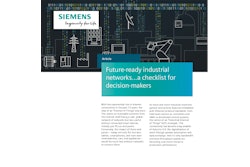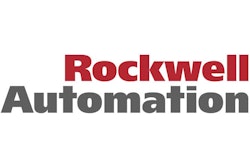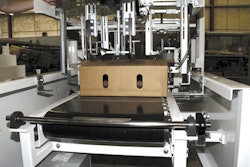
Andy Woehl, winery process engineer at Clos DuBois winery, recently found himself facing a two-pronged data acquisition challenge. First, he had to figure out how to access the controls systems on the plant’s packaging equipment so that he could gather operations information in a usable format. Then he had to work with his company’s information technology department (IT) to make his new data acquisition system work.
The problem was that when there were setbacks or stoppages on the packaging line, the engineers couldn’t always pinpoint the source. Downtime created a lot of finger-pointing, but solutions were hard to achieve without reliable information.
To further complicate matters, the packing season is short. That put added pressure on the integration team, which meant that getting a system up and approved by IT would prove to take more than engineering skill. People skills were equally important.
But in the end, Woehl and his colleagues prevailed. Now in place at the Sonoma Valley facility is the Line Performance Solution (LPS) from Rockwell Software, a Milwaukee-based division of Rockwell Automation.
“We brought this software to our packaging line for two reasons. First, the packaging machines have Allen-Bradley programmable controllers from Rockwell. And second, this package has a predesigned data base and work report function—something that speeded our integration. The biggest delays on the project came from the fact that we had to run on the corporate network, and that took much negotiation with the corporate IT department.”
High speed bottling
The Sonoma Valley winery has both a high-speed bottling line for most of its wines and a low-speed line for premium brands. The high-speed line, which runs at 320 bottles/min, is where Woehl installed the Line Performance Solution. It does about 80 percent of the winery’s total production, producing the “Classic” brands including five or six varietals in two package types.
The packaging line starts with a glass uncaser. Cases of bottles are manually loaded on the uncaser’s infeed conveyor, and the uncaser pulls the case off the glass. From there, the glass bottles go into a monoblock 64-head filler/corker which has a nitrogen-purge system and corker all in an enclosed filling chamber. Next, the line divides into two foilers that apply foils to the bottles. From there, the line comes back into one stream again and enters a labeler. After the bottles are labeled, the line divides again into two case packers. A case sealer, a palletizer, and a stretchwrap machine bring the line to a close.
Every machine on the line, except for the filler/corker, uses an Allen-Bradley SLC 5/05 programmable controller. The filler/corker uses an Allen-Bradley PLC 5. An SLC 5/05 runs all of the conveyors. Everything except for the PLC 5 is on Ethernet communications and is synchronized.
“We pack about 1.75 million cases of wine annually,” says Woehl, “and we’d like to take that to 3.5 million. The whole wine-making process comes together at the bottling stage. And wine is something that people are passionate about, leading to all sorts of arguments about what went into the bottle. We wanted to take the ambiguity out of the process. The question was how do we use the data we have from the packaging machines to improve what we’re doing.”
Finding the right network
The first step was upgrading the network that ties the nine separate packaging machines together. The network already in place, Data Highway-485, was an Allen-Bradley protocol built on standard serial RS-485. Woehl found that it did not have enough bandwidth to pass all the information that a new data collection system required. So he replaced it with an Ethernet network.
With a capable network in place, Woehl added a Logix 5000 controller to the system as a data concentrator. An integer data file was built in each of the machine controllers to capture events from the machines. Events are generated by a series of programmable counters and status bits. Real-world events include machine state (whether running, blocked, stopped, etc.), machine availability, and other events unique to each machine type.
The data concentrator polls each machine controller periodically, reads the integer file, and updates a database built from Microsoft SQL Server using communication middleware from Lighthammer (now a unit of enterprise software supplier SAP) residing on a remote server. The information is shaped by the Rockwell Software LPS. Rockwell had figured out the basic categories that users would need to know and configured the software. The data concentrator collects data from the controllers and fits them within the pre-defined categories. This solution is economical for the buyer, but does not necessarily cover all situations. “We had to get Rockwell to add some custom reports,” states Woehl.
This server is both a data collector and a Web server. The system allows personnel with the proper clearance to view information via an intranet connection. Operations people can see production status including information on production quantities, accumulated downtime, what machines are down, and the like. Purchasing can keep tabs on how many bottles have been used. Management can view a longer-term amount of data and make decisions on areas needing improvement. Says Woehl, “If you can’t measure it, you can’t manage it. Now each individual department can see how they are doing and where they need to improve.”
But as radio/television commentator Paul Harvey would say, “Now for the rest of the story.” Because Woehl’s system required a server and access to the company intranet, he needed to work closely with the information technology (IT) department at parent company Allied Domecq. Historically, packaging engineers would rather visit the dentist than work with corporate IT.
Understanding IT
According to Woehl, the first thing he had to do was to understand all the concerns IT would have for his project. “They know a lot more about huge networks than my relatively simple automation network,” says Woehl. “They don’t understand the lingo of networking in the manufacturing world. For example, they don’t use ‘HMI,’ but instead use ‘GUI.’ They don’t know what a PLC is. So the first part of the project was understanding each other. We needed to achieve a common language so that I could explain things I was doing to them.”
One of the first negotiations was to achieve a common understanding of manufacturing data and what this was going to be used for. According to Woehl, “When you tell IT that you are going to collect and store data, they immediately put that statement in their context. They are charged with gathering and protecting financial data that is often regulated by laws such as Sarbanes-Oxley or the Securities Exchange Commission. Their first thought is security. If they lose any of that data, it’s a big problem. But for me, if we lost a day’s production data, it’s not a real problem. Responsibilities had to be defined for who was going to maintain and secure the data. I couldn’t do that with my small staff, so we needed to work together.”
Another major item was cybersecurity. A small staff of process engineers could not possibly stay abreast of all the latest viruses and build and maintain an adequate firewall for the network. That is a continuing job of IT, and they are staffed and trained to handle it.
Perhaps the biggest obstacle of all should be no surprise—who is going to fund the capital expenditures in servers and networking for the project and then who owns it. “Typically, if it is on the network, they own it,” states Woehl. “Expenditures come from their budget for the capital, then they must allocate funds to pay for support and maintenance.”
Allied Domecq’s corporate IT group was also located far from the winery in Colorado. Woehl needed contacts to learn the system and to know the right people. He developed a relationship with the local IT support person in Sonoma Valley and learned all the appropriate procedures for working with the department. He learned how to communicate with IT people, then a group of winery engineers flew to corporate headquarters to meet with IT and business managers. The meeting led to creation of a list of guiding principles. They determined who would buy and capitalize the equipment and how it would be supported.
Use IT standards
“We bought equipment through IT using IT standard components,” reports Woehl. “Then IT set it up and burned in the standard systems and applications. If we followed all their rules of hardware and software, then they would maintain the network, provide support, and download virus protection. Applications that reside on the server, such as the Rockwell system, remain my responsibility. So I developed a plan to work with Rockwell, as well as to maintain, backup and save all manufacturing data.”
This all sounded good in theory, but further roadblocks remained. Woehl discovered that IT had no way to allocate time to the project. But with the help of his local IT contact, he was able to learn how to apply for a formal IT project, fill out the correct forms, and get on the IT roster. At first hardware procurement proceeded at a slow pace, but as he learned the system, the process got better.
Summing up the project, Woehl says, “There were lots of conversations and a lot of participation. Technical people in IT were helpful in coming up with solutions. I used articles from trade magazines like Automation World to show them that what I was doing was a common problem and how automation now is like a common IT environment.”
As Andy Woehl discovered at Clos du Bois, conquering the technical challenges are only part of the problem. Learning to work with other departments closes the loop and gets the wine to market.


























